The Nintendo 64 and its contemporary rivals are commonly regarded as dated, primitive efforts in 3D gaming–something to be acknowledged but not really enjoyed. I must admit, as someone who was the perfect age to experience the leap from the 16-bit Super Nintendo to the 64-bit Nintendo 64, I find that opinion somewhat exasperating. Many of the games that I witnessed quite literally change the industry, are now treated like a Victorian hoop-and-stick. ‘Ugly’, ‘awkward’, ‘dated’ and even ‘unplayable’ are all words used to describe some of the most influential games of all time. And I don’t just mean from your average ‘dude-bro’ gamer—I see it from successful video-game journalists too. So how did we get to this point? Why is the N64 so commonly disregarded? Although perhaps these days the real question is, ‘why do fans like me think it was so important?’
The Nintendo 64 is Last to Arrive, Meanwhile the PlayStation Thrives
The Nintendo 64 launched in Japan in June 1996 and then in North America a few months later. It wouldn’t arrive on European shores until March the following year. By that time, the new kid on the block—the Sony PlayStation—had been dominating the market in most regions for well over a year. The Sega Saturn was holding its own in its native Japan. Elsewhere, the risky strategy of a surprise early launch had proved disastrous. Both consoles offered a similar experience—32bit home consoles which played games (typically arcade ports at that time) on CD-ROMs. Both also used edgy and provocative marketing, specifically designed to target teenagers and young adults. Crucially however, the PlayStation had the edge when it came to 3D graphics. And at that time the gaming public were ravenous for 3D games.
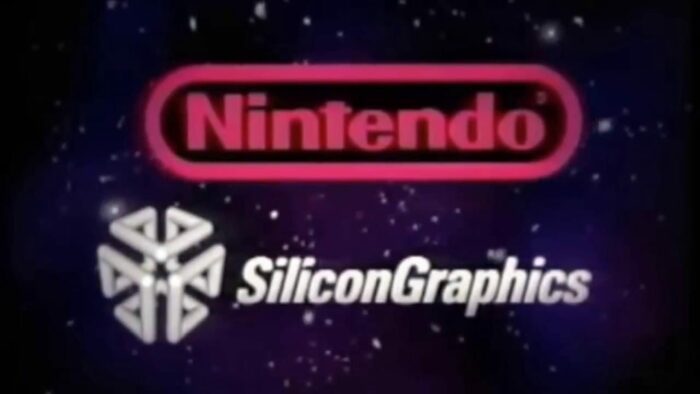
Project Reality and the Long Wait
The Nintendo 64 had started life as collaboration between the Kyoto-based video-game giant and Silicon Graphics Inc (a Californian company that specialised in computer-generated images). Initially known as Project Reality, Nintendo would first tease their upcoming console at the Shoshinkai trade show in 1993. CGI special effects had been blowing audiences away in cinemas thanks to the release of Jurassic Park and Terminator 2. Project Reality promised to bring the technology used to create these spectacles to the home console. For gamers at the time, it was an almost unimaginable prospect.
It would be a long wait until Project Reality would become just that—a reality. In the meantime, gamers would get a few tantalising glimpses into the potential of the exciting new technology. Donkey Kong Country for the Super Nintendo and Killer Instinct for the arcade were released to much praise and excitement. Both had been developed on SGI workstations. Although still 2D games, the sprites were created and animated as 3D models and looked ridiculously impressive at the time. Yet over the following year, a lack of actual information on the new console itself (and the release of its 32-bit rivals) would see excitement begin to wane.
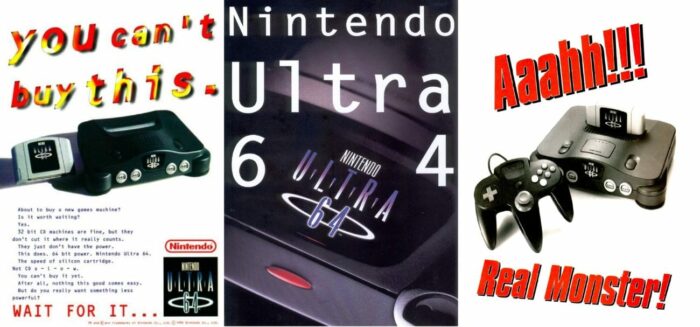
The Nintendo Ultra 64 and the Consequence of Cartridges
The world would finally get their first glimpse at the Super Nintendo successor in 1995—now known as the Nintendo Ultra 64. The pictures show the now iconic design. Four controller ports line the face of the console under a sweeping, curved top case. The logo sitting proudly in centre on a plastic jewel badge while two pillar-like feet stand on either side. It was a handsome machine though fairly understated. Perhaps most notable was the cartridge slot which sat atop. Nintendo had bucked the trend of its rivals by sticking with cartridge-based games. They surmised that a CD-ROM drive would make the console prohibitively expensive whilst the long loading times would spoil the gameplay experience.
What they didn’t foresee however, was the impact such a decision would have on third-party developer support for the console. Long-time collaborators (especially those from Nintendo’s native Japan) were abandoning the industry giant and choosing to develop instead for its rival—the Sony PlayStation. CD-ROMs offered a huge storage capacity which gave ambitious projects almost limitless potential. CD quality sound and FMV cutscenes had allured away greats such as Konami and Capcom. Perhaps most notably of all however was Squaresoft.
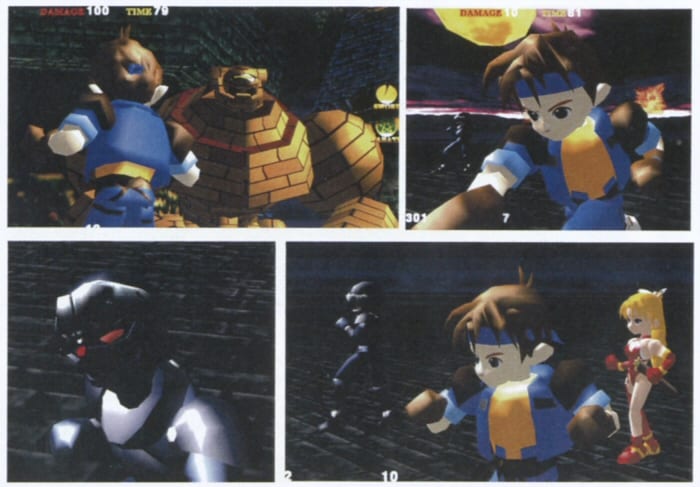
Farewell Final Fantasy, Hello Dream Team?
A demo of a fully 3D Final Fantasy battle-scene had been shown off at a trade show in 1995. Created on SGI workstations, many assumed the next Final Fantasy would appear on the Nintendo 64. (The previous six entries had all appeared exclusively on Nintendo consoles.) Of course, that wouldn’t be the case and Final Fantasy VII would instead release for the Sony PlayStation in 1997. Spanning three discs, packed with pre-rendered environments and CG-cutscenes, Final Fantasy VII would’ve certainly been a very different game had it have been developed for the N64. As it was, Squaresoft’s decision was undoubtedly the right one. The capabilities of the CD-ROM allowed them to fully realise their vision and Final Fantasy VII, although doing little to revolutionise the JRPG gameplay, was nothing short of a masterpiece.
With almost non-existent support from their countrymen, Nintendo would instead look towards developers in the west. By 1996 Nintendo had fifteen publishers committed to releasing software for the upcoming system. Far from the “Dream Team” that Nintendo had envisioned, the developers in question were of mixed repute. At the top of the pile were Rare—riding high on the recent success of Donkey Kong Country and Killer Instinct. Big names like Acclaim, Lucasarts, Electronic Arts, and Virgin Interactive were welcome but certainly weren’t averse to releasing mediocre or poor-quality games. Lesser known, or even unknown, studios made up the rest of the line-up. It was hardly an encouraging start.
Yet there was always going to be one developer that gamers could rely on for quality—Nintendo themselves. Sure enough, when the Nintendo 64 finally launched (having dropped the ‘Ultra’ moniker) it came armed with the ultimate killer app.
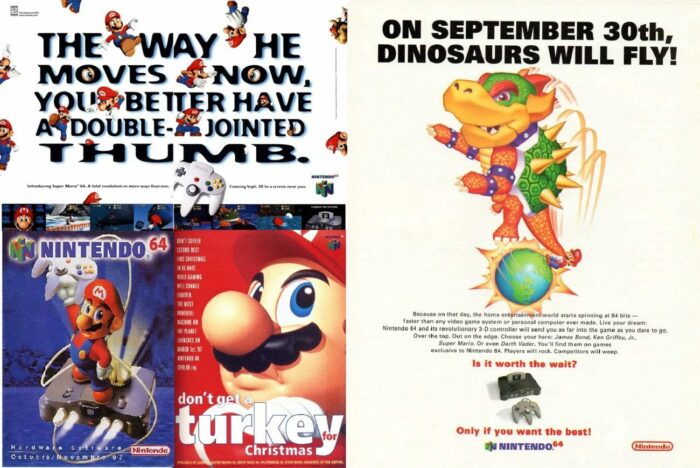
Super Mario 64 Takes a Giant Leap
An early build of Super Mario 64 had first been shown off at the Shoshinkai trade show in 1995. First-hand accounts from some of the developers in attendance stated that the demo had caused quite a stir. Despite being only 50% complete, attendees came away with little doubt that the game was something truly special. Allegedly, Sony executives at the show were in such disbelief that they speculated the game must be running on hidden workstations rather than real hardware. Yet, in June 1996, the gaming public could finally buy the game for themselves—in Japan at least. And it turned out that Super Mario 64 was very real and it was certainly something very special.
Few launch games have gone on to completely define a console but Super Mario 64 did just that. The unusual three-pronged N64 controller feels as though it was designed in tandem with the game. Though perhaps not the first of its kind, the N64’s analogue stick was certainly the first time such a control method truly worked. Positioned on the centre prong, it was incredibly precise and allowed for minute inputs (more so even than current sticks which use a different mechanism). Mario could be moved from an almost indiscernible creep to a full-on sprint and everything in between with ease. Changing direction felt effortless and carried a natural sense weight. Never before had a 3D game felt so intuitive and joyous to move around in.
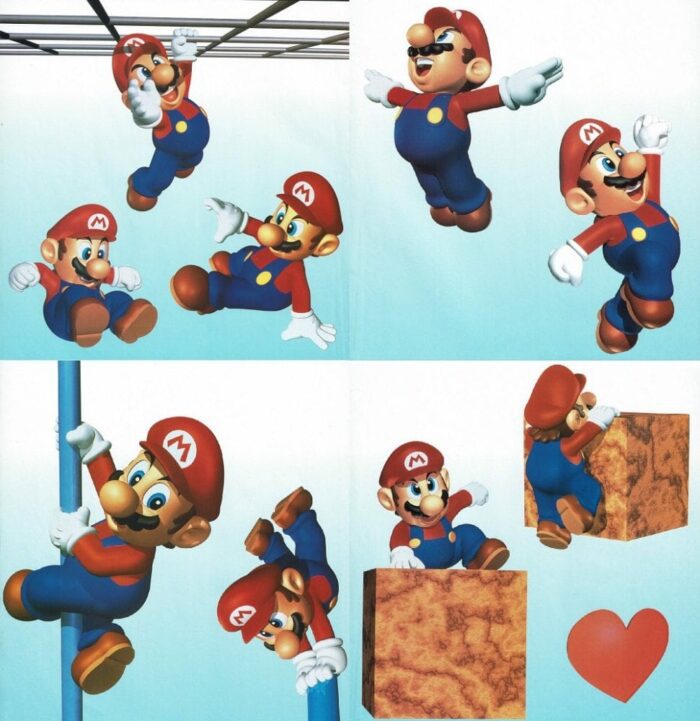
Control, Camera, and the Joy of Movement
On the right prong sits the A and B buttons which are used for Mario’s jump and punch respectively. Mario has a plethora of jumps available to him. These include the triple jump, side flip, backwards somersault, long jump, dive, wall jump and butt stomp. The player is able to string these together in seamless combinations.
To the right of those are the four C-Buttons. Short for Camera-Buttons, these are designed to adjust the players view of the action. For the first time, Nintendo had designed a virtual cameraman in the form of Lakitu. Previously, games had rigidly tied the view to the player character. This allowed Mario to change direction rapidly without the camera following wildly. The C-Buttons allowed the player to nudge Lakitu around to better judge the 3D environment. Though not quite the complete control we expect nowadays, this was Nintendo actively looking ahead to potential issues in 3D games.
Players begin their journey in Super Mario 64 in the grounds outside Peach’s Castle. The area is a safe space in which players can practice and explore Mario’s extensive move set. Perhaps more importantly, it allowed players to simply marvel and enjoy the feeling of moving around in a 3D space. I distinctly remember hearing a rumour from the time that grown men had cried when they first played the game. Now that may or may not have been true. In any case, I think it gives an idea of the buzz surrounding the game. Perhaps it’s hard to imagine such a thing now. It’s something we’ve long taken for granted (or in the case of younger gamers, never lived without). At the time it was a truly magical experience.
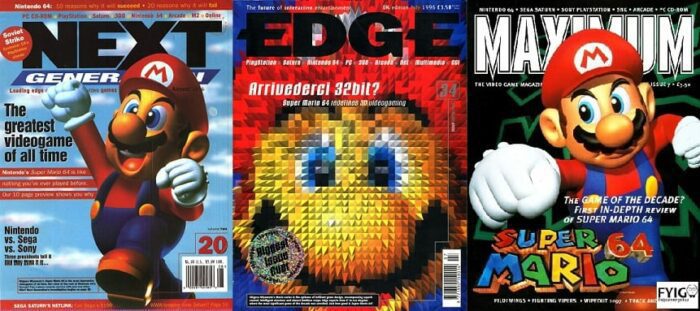
The Nintendo 64 Changes the Game
Suddenly the delays, lack of third-party support, and the decision to stick with cartridges seemed irrelevant. Shigeru Miyamoto and his team had created the perfect game to show off the Nintendo 64. In doing so, they had also introduced a new era of 3D gaming.
Super Mario 64’s influence on 3D game design can never be overstated. It literally laid the groundwork for nearly all third-person games to follow. None of its contemporaries would reach the level of fluid control it offered. In fact, relatively few have in the intervening years. Yet, in recent times its shining reputation has seemed to dull somewhat, perhaps as a result of its ‘giant leaps’ having been lost to time and now taken for granted. Or perhaps as a result of some less-than-stellar rereleases. These include an ambitious DS port, a release on the Wii Virtual Console and a HD remaster on the Switch. Super Mario 64 has only truly felt at home on the Nintendo 64. So intrinsic was the link between the software, hardware and controller. In my opinion, it remains the only way to truly experience the game at its best.
Of course, the Nintendo 64’s impact on gaming history didn’t end with Super Mario 64—it had only just begun. Stay tuned in the coming months for more articles on the Nintendo 64. I’m going to be looking at the highs and lows of the console’s library including its obscurities, oddities and gems.
Until then, I’ll finish with a statement that I believe to be absolutely true. Together with Super Mario 64, the launch of the Nintendo 64 gave us the greatest leap that we will likely ever see in video-gaming.

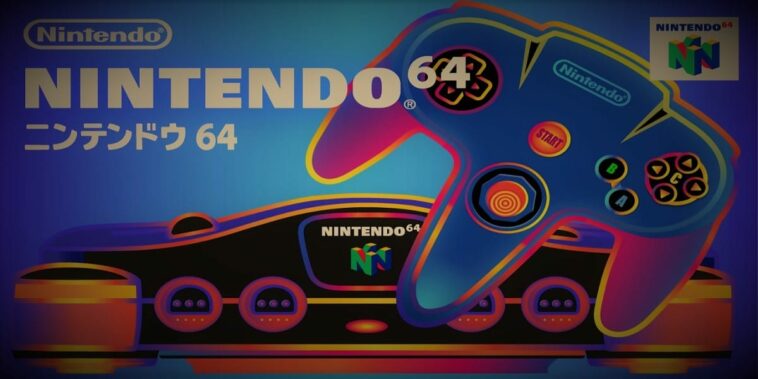
Awesome! I am very much looking forward to following along with this series of N64 articles